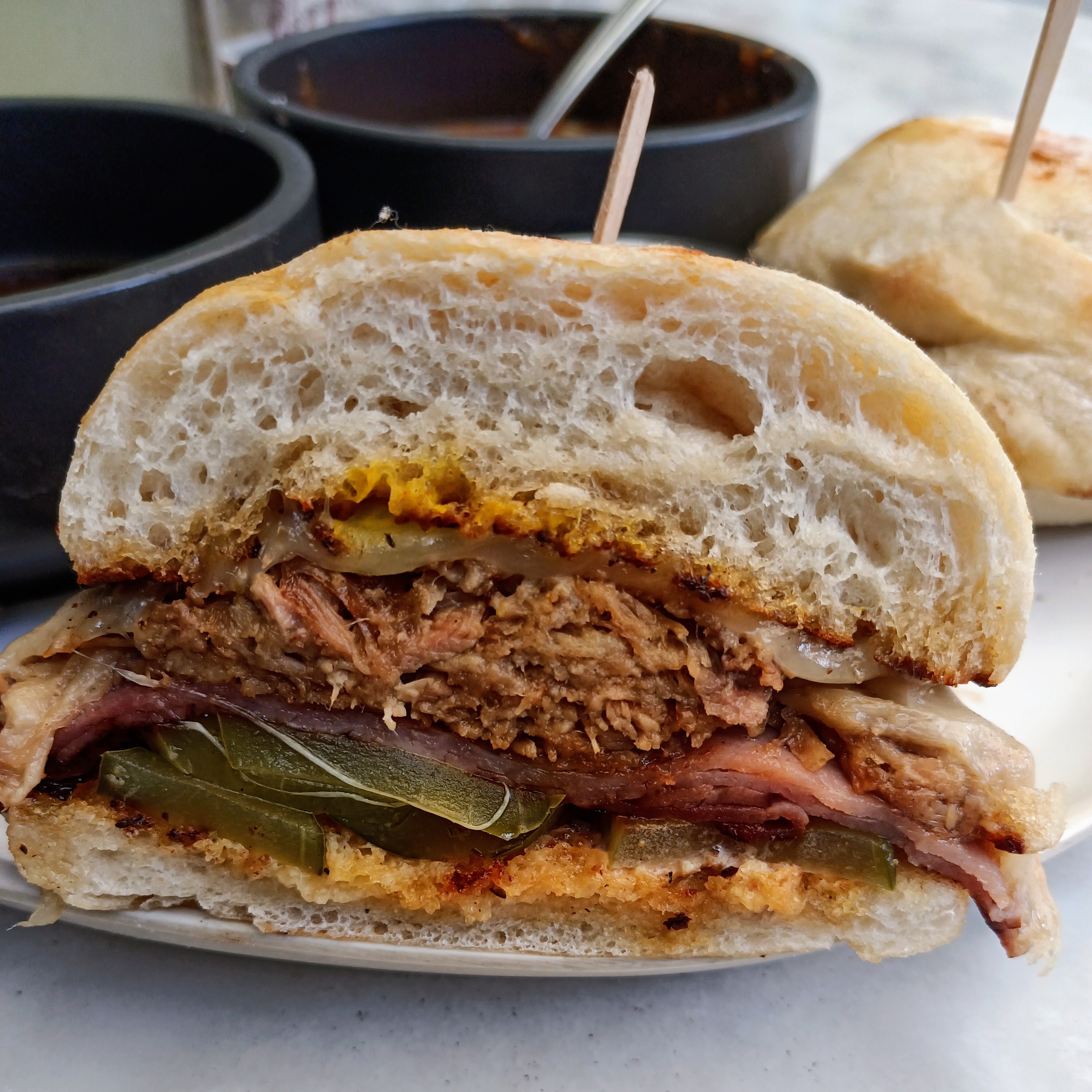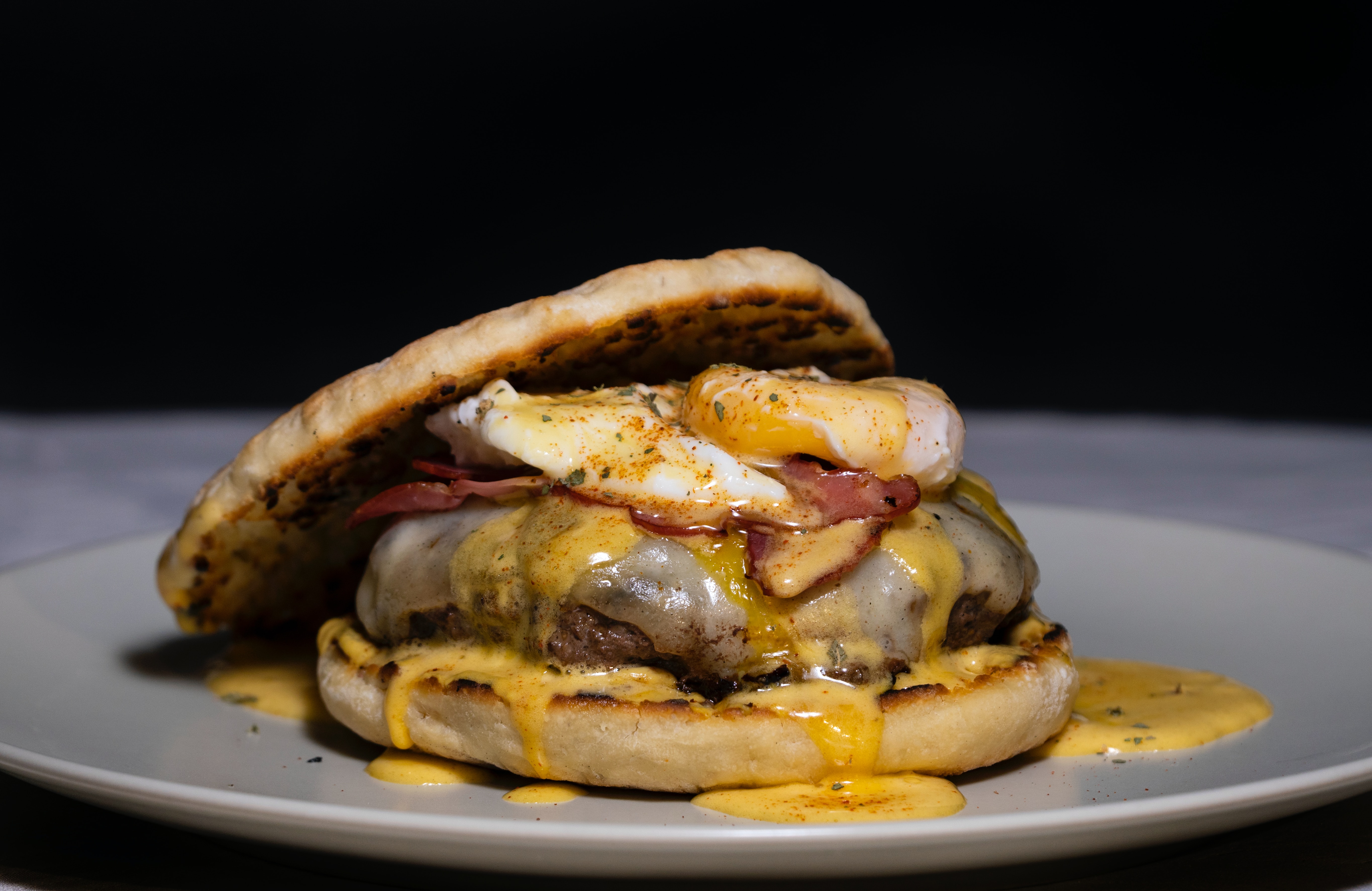German Chocolate Cake and Other Foods that are Secretly American
Many of our favorite foods are foreign, though we’ve given them an American twist. A great example of this is fettuccine alfredo—the American version is very different from the authentic Italian version, yet they’re both delicious in their own ways.
However, a small collection of foods sound like they’re foreign, but in fact are 100%, gloriously American. I’ve saved the best one for last.

German chocolate cake sets itself apart with coconut-pecan frosting that I personally can’t stand, but nonetheless is widely popular in the U.S. Turns out it’s not German. Rather, it was coined for a confectioner named Samuel German in 1852. German worked for “Baker’s Chocolate Company,” and had invented several lines of specialty chocolate for them. One Texan woman made a chocolate cake using German’s chocolate, and named it “German’s Chocolate Cake” in his honor. Eventually the “s” disappeared, leaving us with German Chocolate Cake.

This recipe, like many others, isn’t brought from its namesake country, but rather is inspired by it. Cold shredded chicken, lettuce or cabbage, fried wontons, and a Chinese-inspired dressing? Well of course we’ll call it the Chinese chicken salad!

This is one of the many famous American recipes that was invented by enterprising immigrants to our amazing country. The Cubano, which might be my favorite non-burger sandwich of all time, was invented in Florida by Cuban immigrants and has since become the signature sandwich of Tampa. This sandwich generally includes roasted pork, ham, swiss cheese, pickles, and plenty of mustard slathered over a thin Cuban loaf. Technically the Cubano in the picture above isn’t totally authentic because it isn’t served on the right bread, but hey, there’s nothing wrong with variety.

Another invention by an industrious immigrant, the English muffin was developed in 1880 by Samuel Bath Thomas, an English immigrant who owned a bakery in New York City. The English muffin resembles the crumpet, but was designed to be cut in half and toasted, so he simply called them “toaster crumpets.” Eventually they were simply called English muffins.
Russian dressing is similar to Utah’s fry sauce: mayo and ketchup with added ingredients. But while fry sauce often includes pickles, red wine vinegar, garlic and paprika, Russian dressing may include horseradish, Worcestershire sauce, lemon juice, minced pimentos, chives, or hot sauce.
And oddly, it has nothing to do with Russian food. One theory is that an early version of the dressing included caviar (farmed from the sturgeon local to Russian waters). The original Russian dressing seems to have simply been a vinaigrette, but the more modern version that we know of is credited to a New Hampshire entrepreneur who started selling it out of his store.
Food historians don’t all agree on how the Swiss steak got its name, but the most popular theory is it’s a reference to “swissing,” which is a process of compressing cloth between rollers.

If you know me even a little, you know how much I love burgers. My inspiration for writing this article was an interview I saw with Tom Holland (our most recent Spider-Man actor), who has a strange dislike for American food. Now before you get ahead of yourselves, let me state that I love Tom Holland. I thought he did a great job as the web slinger, and he’s pushed hard to make a name for himself outside of his Marvel debut.
With that being said, his opinion of American food is silly and misinformed, and when I heard him spout off about how the “hamburger was invented in Hamburg, so it’s German, not American,” I nearly flipped a table and threw my cast iron pan through a window.
Let me clarify.
The hamburger was named after the Hamburg steak, which is in fact a German invention. The Hamburg steak is made by finely grinding a cheap cut of beef and forming it into a patty. You know, like a burger patty? Then the steak is cooked like any other steak, and served over rice with beef gravy.
Does that sound anything like a hamburger to you?
No one thought of serving a ground beef patty between two slices of greasy bread until the Hamburg steak made its way to America. And we didn’t serve it with rice and gravy, we originally served it with mustard and onions, and gradually added in delicious American cheese and a squirt of some humble ketchup. In truth, the hamburger is one of the most American foods we have.
However, a small collection of foods sound like they’re foreign, but in fact are 100%, gloriously American. I’ve saved the best one for last.
German Chocolate Cake

German chocolate cake sets itself apart with coconut-pecan frosting that I personally can’t stand, but nonetheless is widely popular in the U.S. Turns out it’s not German. Rather, it was coined for a confectioner named Samuel German in 1852. German worked for “Baker’s Chocolate Company,” and had invented several lines of specialty chocolate for them. One Texan woman made a chocolate cake using German’s chocolate, and named it “German’s Chocolate Cake” in his honor. Eventually the “s” disappeared, leaving us with German Chocolate Cake.
French Dip Sandwich
This sandwich was invented in Los Angeles by the head chef of the restaurant Phillipe when he accidentally dropped a baguette into a roasting pan filled with beef juice. To be honest, I always have trouble believing these stories of accidental inspiration, but the truth is irrelevant in this case. The point is one of America’s most delicious sandwiches has rarely, if ever, visited France. Instead, it was born in 1918 in lovely California.Chinese Chicken Salad

This recipe, like many others, isn’t brought from its namesake country, but rather is inspired by it. Cold shredded chicken, lettuce or cabbage, fried wontons, and a Chinese-inspired dressing? Well of course we’ll call it the Chinese chicken salad!
Cubano Sandwich

This is one of the many famous American recipes that was invented by enterprising immigrants to our amazing country. The Cubano, which might be my favorite non-burger sandwich of all time, was invented in Florida by Cuban immigrants and has since become the signature sandwich of Tampa. This sandwich generally includes roasted pork, ham, swiss cheese, pickles, and plenty of mustard slathered over a thin Cuban loaf. Technically the Cubano in the picture above isn’t totally authentic because it isn’t served on the right bread, but hey, there’s nothing wrong with variety.
English Muffin

Another invention by an industrious immigrant, the English muffin was developed in 1880 by Samuel Bath Thomas, an English immigrant who owned a bakery in New York City. The English muffin resembles the crumpet, but was designed to be cut in half and toasted, so he simply called them “toaster crumpets.” Eventually they were simply called English muffins.
Russian Dressing
The next two foods are weird because in truth, they have nothing at all to do with the culture credited for them.Russian dressing is similar to Utah’s fry sauce: mayo and ketchup with added ingredients. But while fry sauce often includes pickles, red wine vinegar, garlic and paprika, Russian dressing may include horseradish, Worcestershire sauce, lemon juice, minced pimentos, chives, or hot sauce.
And oddly, it has nothing to do with Russian food. One theory is that an early version of the dressing included caviar (farmed from the sturgeon local to Russian waters). The original Russian dressing seems to have simply been a vinaigrette, but the more modern version that we know of is credited to a New Hampshire entrepreneur who started selling it out of his store.
Swiss Steak
Another strange food because it has nothing to do with Swiss fare, the Swiss steak has actually fallen out of popularity since the 1920s—probably because the Great Depression is over and we no longer want to eat cheap cuts of meat. However, in my opinion, the Swiss steak is delicious and we need to bring it back. It is made by tenderizing an inexpensive cut of beef, then braising it in a tomato-based sauce.Food historians don’t all agree on how the Swiss steak got its name, but the most popular theory is it’s a reference to “swissing,” which is a process of compressing cloth between rollers.
Hamburger

If you know me even a little, you know how much I love burgers. My inspiration for writing this article was an interview I saw with Tom Holland (our most recent Spider-Man actor), who has a strange dislike for American food. Now before you get ahead of yourselves, let me state that I love Tom Holland. I thought he did a great job as the web slinger, and he’s pushed hard to make a name for himself outside of his Marvel debut.
With that being said, his opinion of American food is silly and misinformed, and when I heard him spout off about how the “hamburger was invented in Hamburg, so it’s German, not American,” I nearly flipped a table and threw my cast iron pan through a window.
Let me clarify.
The hamburger was named after the Hamburg steak, which is in fact a German invention. The Hamburg steak is made by finely grinding a cheap cut of beef and forming it into a patty. You know, like a burger patty? Then the steak is cooked like any other steak, and served over rice with beef gravy.
Does that sound anything like a hamburger to you?
No one thought of serving a ground beef patty between two slices of greasy bread until the Hamburg steak made its way to America. And we didn’t serve it with rice and gravy, we originally served it with mustard and onions, and gradually added in delicious American cheese and a squirt of some humble ketchup. In truth, the hamburger is one of the most American foods we have.
Long Live America
Nuff said. American food rocks. Matthew Christensen
Matthew Christensen
Weekly Newsletter Contributor since 2023
Email the author! matthew@dvo.com
